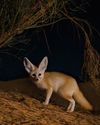SHIELDBUG SUCCESS
BBC Wildlife
|May 2021
They’re colourful, accessible and popular, and many are expanding their ranges into and across the British Isles. We uncover more about the changing fortunes of some of Britain’s favourite insects.

Everyone loves shieldbugs – why else would we have given them such a heroic and heraldic name? These distinctive bugs are relatively large, stout and brightly coloured – and robust enough that they can be picked up with impunity. They walk across the hand with a friendly clockwork gait and take to the wing from the end of a finger with an assured model-aeroplane whirr. They are highly photogenic, and there are just enough of them (about 70 British species) to pique the interest of non-specialists.
‘Bug’ (also bugg or bugge) is an old word. Though it is often used nowadays to refer to almost any small, mean creepy-crawly, for the strict entomologist it means a member of the insect order Hemiptera. Characterised by long piercing and sucking mouthparts and an incomplete metamorphosis (see page 61), this large group includes about 100,000 species worldwide, with cicadas, spittlebugs, leaf-hoppers, aphids, scale insects, water boatmen, back-swimmers, bedbugs, capsids and shieldbugs among their number.
Traditionally, ‘shieldbug’ meant a member of the family Pentatomidae, named for their five antennal segments (most other bugs have four) – but this rather unfairly excludes many four-segmented species (family Coreidae) that are still very shield-shaped. Shieldbugs are, in fact, a slightly arbitrary grouping of several related bug families lumped together.
Denne historien er fra May 2021-utgaven av BBC Wildlife.
Abonner på Magzter GOLD for å få tilgang til tusenvis av kuraterte premiumhistorier og over 9000 magasiner og aviser.
Allerede abonnent? Logg på
FLERE HISTORIER FRA BBC Wildlife

BBC Wildlife
"I was terrified the elephant would ram us"
African elephant in Kenya
2 mins
January 2026

BBC Wildlife
ALL YOU EVER NEEDED TO KNOW ABOUT THE Fennec fox
THE FENNEC FOX IS THE SMALLEST fox in the world, with a body length that can be as little as 24cm.
3 mins
January 2026

BBC Wildlife
INTO THE PLASTISPHERE
A unique synthetic ecosystem is evolving in our oceans – welcome to the plastisphere
7 mins
January 2026

BBC Wildlife
“More than half of all animal life exists in a parasitic relationship, and all life lives in symbiosis”
Our survival depends on species evolving to live together - but some relationships take dark turns
7 mins
January 2026

BBC Wildlife
Are animals able to dream?
SLEEP IS A MYSTERIOUS THING. FOR A long time, we weren't sure why we do it.
1 mins
January 2026

BBC Wildlife
Does a cuckoo know it's a cuckoo?
ABSURD LITTLE BIRDS ACROSS THE world lay their eggs in the nests of other species, leaving the hapless parents to raise a changeling at the expense of their own offspring.
2 mins
January 2026

BBC Wildlife
Orcas killing young sharks
Juvenile great whites are easy prey for orca pod
1 mins
January 2026

BBC Wildlife
Ocean goes on tour
Acclaimed film touring the UK, backed by live orchestra and choir
1 min
January 2026

BBC Wildlife
Feisty bats hunt like lions
Winged mammals use a 'hang and wait' strategy to take down large prey
1 mins
January 2026

BBC Wildlife
SNAP-CHAT
Richard Birchett on magical merlins, wily coyotes and charging deer
2 mins
January 2026
Translate
Change font size

